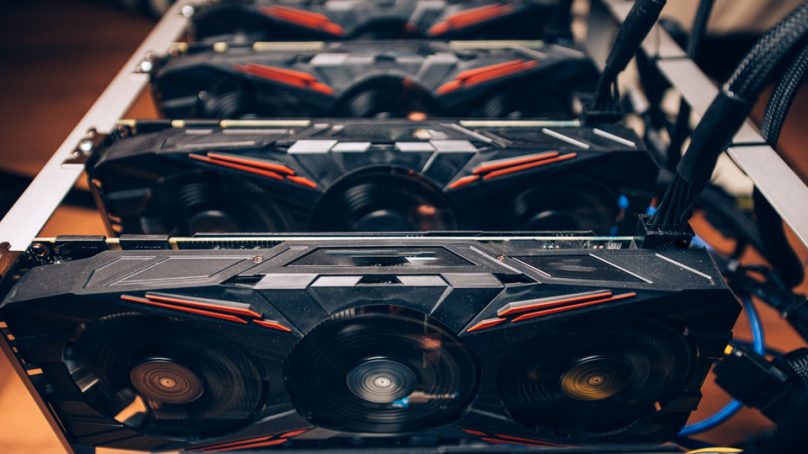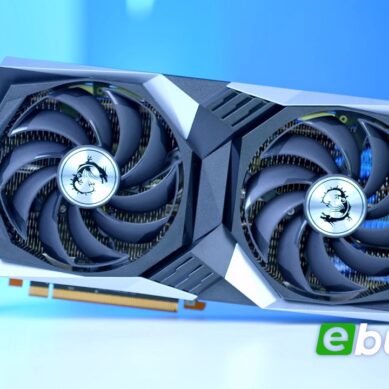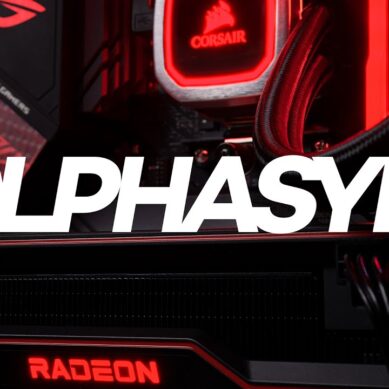
The graphics card is among the most important components in any gaming system. It’s here that all of the 3D rendering is performed, and from here that the image is piped into your monitor. You can think of a graphics card as a sort of miniature PC dedicated to graphical tasks. It comes with its own super-quick onboard memory, which is used to store the textures that make up your game, along with the frames that are going to be displayed on your monitor. It also comes with its own processing unit responsible for all of the graphical calculations.
This processor is called the GPU, or Graphics Processing Unit. Like your system’s CPU, it can be overclocked for superior performance. Indeed, many cards are built with this purpose in mind, and deliberately leave plenty of room for the card to be pushed beyond its factory capabilities. In doing so, you’ll generate more heat, and you might need to bump up the voltage in order to keep things running nicely.
While many of us might be willing to get our hands dirty with overclocking the CPU, there aren’t quite so many willing GPU overclockers. Recognising this, many manufacturers overclock their cards out of the box, allowing for superior performance to the same card running at stock speeds. Let’s take a closer look at a few of the more tantalising factory-overclocked cards out there.
+ Two 90mm fans
+ Customisable RGB lighting
– Comparatively measly overclock
This card takes us a little beyond the 1340MHz you’ll find on the reference card, at 1380MHz. To handle the extra heat, Gigabyte has strapped on a pair of 90mm fans, along with four copper heat pipes. The fans spin in opposite directions, more effectively transferring heat away from the surface of the card, and reducing turbulence.
Sapphire NITRO+ Radeon RX Vega56
+ Vapour-X cooling system
+ Great performance
– Expensive
Vega 56 Cards take advantage of lightning-quick HBM2 memory. Sapphire has clocked the GPU up to 1572MHz, and the memory up to 1800MHz. It claims that this leads to an impressive 7% improvement in performance compared to the reference cards. In order to achieve these clocks, the NITRO+ Vega56 makes use of the same Vapor-X technology found in previous Sapphire cards. This incorporates six nickel-plated pipes of varying widths inside the heat sink, which ferry coolant away from the processor.
+ Powerful
+ Generous cooling
– Thicker card might not suit crowded cases
Asus’s take on the current cream of the AMD crop is as generously featured as you would expect. The core clock is bumped up to 1590MHz, and the memory up to 945MHz. This card takes up two-and-a-half slots, allowing for greater thermal efficiency. Cooling is handled by three fans, mounted atop a heat sink with 40% more effective surface area compared to previous two-slot cards. It’s combined with an improved copper heat spreader that adheres twice as closely to surface of the GPU for superior thermal transmission.
+ Great price:performance ratio
+ Six-pin power
– Some tinkering required to achieve full overclock
Asus has taken this card up from the stock boost clock of 1708MHz all the way to a healthy 1809MHz. By default, the card ships in ‘gaming’ mode, which puts the base and boost clocks just south of the full overclock (but still higher than the reference card). To get the full function from the card, you’ll need to tweak a setting in software. This can be done in seconds, and the resultant performance improvement justifies it. This overclock is handled with just a single six-pin power connector, making it a sensible choice for efficient builds.
Two of Asus’s patented Wing-Blade fans take care of the extra heat. They’re seated within a snazzy white enclosure, and they’ll look the part inside your case. The 6GB version of the 1060 GTX already represents fantastic performance for the money, and with the help of this factory overclock, it’s even more tantalising.
MSI GeForce GTX 1070 ARMOR
+ VR Ready
+ Generous memory
– Not as powerful as the more recent 2070
There’s a great deal to get excited about in MSI’s take on the 1070. The core and boost clocks sit at 1556 and 1746 MHz respectively, a marked improvement over the reference speeds of 1506MHz and 1683MHz. The two MSI TORX fans deactivate when the temperature drops below 60°C, allowing for quiet operation when you’re just browsing Windows or checking Facebook. You’ll be able to tweak every setting to your satisfaction using MSI’s popular overclocking utility, Afterburner. This is an overclocked card that’s sure to tempt.
Asus GeForce RTX 2080 Ti DUAL OC
+ The most powerful graphics card ever made
+ Excellent build quality
– Very expensive
If you’re shopping at the very top of the range, then Nvidia’s new flagship will attract your attention. This overclocked version commands a hefty premium, even compared with the other versions of the same card. But is the extra investment worthwhile? The first thing you’ll notice about this card is that it’s gigantic. A 2.7-slot design means a chunkier heat sink, which means more effective heat dispersal. You’ll find the same Wing-Blade fans we’ve talked about on the other Asus cards mentioned here, and they do the job just as well.
Asus believes it produces 105% more static pressure against the heat sink compared with traditional axial fans, and there’s built-in dust-protection that’ll prevent stray particles from blocking up the fins and inhibiting your cooling. Each card is tested for 144 hours under load, so you can be sure that the clock is stable when you install.
Not all graphics cards are built alike, and this is true even of cards based on the same graphics engine. If you’ve got a good idea of the card you’re looking for, be sure to check whether there are overclocked versions of the same card available for the right price. In doing so, you’ll be able to enjoy that extra performance, with the security that the overclock itself has been implemented by people who know precisely what they’re doing.






